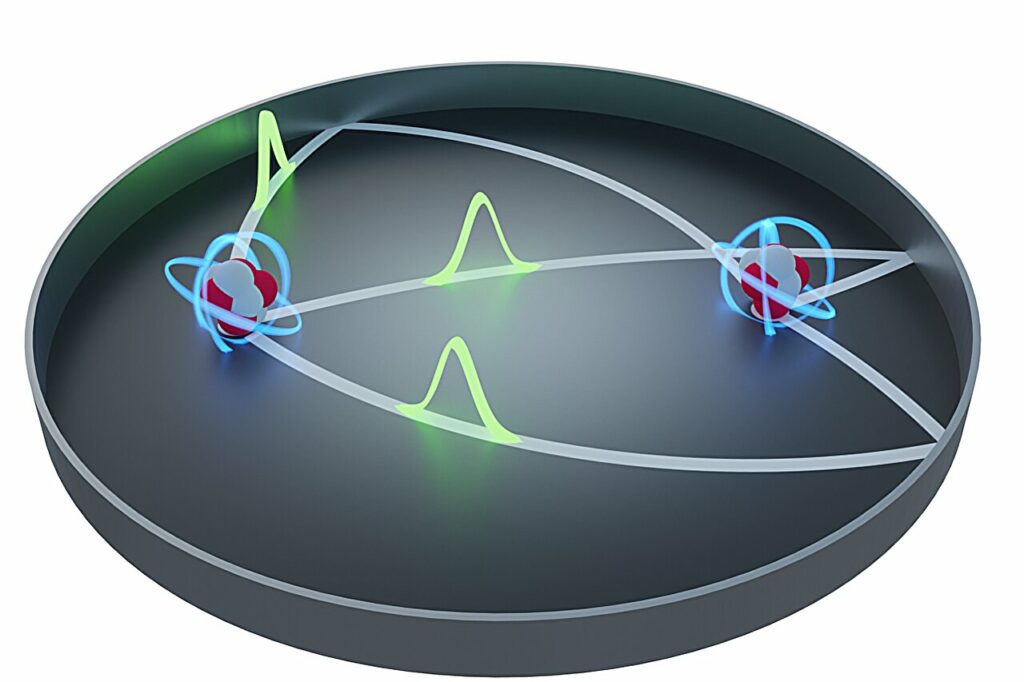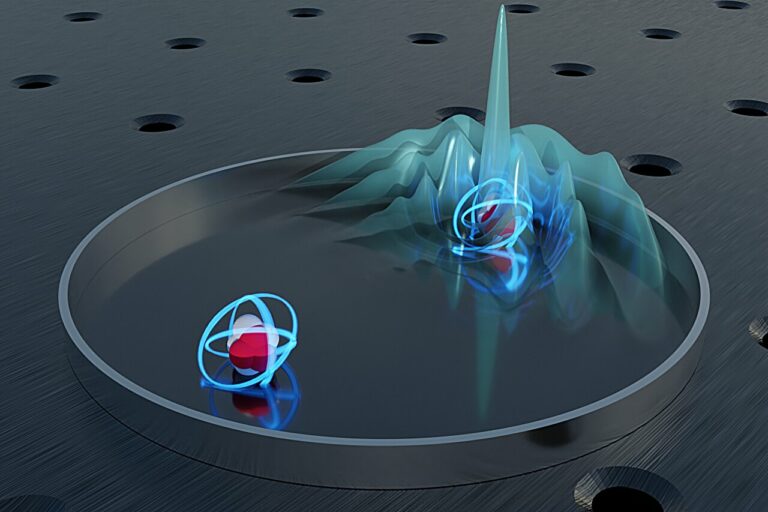Precision in Quantum Interaction: Two Atoms Engage in ‘Quantum Ping-Pong,’ Bouncing a Single Photon with High Accuracy
Atoms have the ability to absorb and emit light, which is a common occurrence. However, in most cases, when an atom emits a light particle, it does so in all possible directions, making it difficult to recapture the photon.A team of researchers from TU Wien in Vienna, Austria, has now presented a theoretical demonstration showing that by using a special lens, it is possible to guarantee that a single photon emitted by one atom can be reabsorbed by a second atom. Not only does the second atom absorb the photon, but it also directly returns it back to the first atom. This allows the atoms to pass the photon back and forth with precise accuracy, similar to a game of ping-pong.
How to tame a wave
According to Prof. Stefan Rotter from the Institute of Theoretical Physics at TU Wien, the emission direction of a photon in free space is completely random, making it highly unlikely for another distant atom to capture the same photon. This is due to the wave-like nature of the photon’s propagation, which makes it impossible to determine its exact direction of travel. Therefore, whether the light particle is reabsorbed by a second atom or not is purely a matter of chance.
However, the situation changes when the experiment is conducted in an enclosed environment rather than free space. This phenomenon can be compared to whispering galleries in acoustics, where two individuals positioned at the focal points of an elliptical room can hear each other perfectly even when whispering quietly.
Oliver Diekmann, the primary author of the current publication, suggests that it is theoretically possible to construct a similar setup for light waves by placing two atoms at the focal points of an ellipse. However, in reality, achieving this would require extremely accurate positioning of the two atoms at these specific focal points.
The Maxwell fish-eye lens
The research team, therefore, devised an improved strategy based on the fish-eye lens concept pioneered by James Clerk Maxwell, the renowned figure in classical electrodynamics. This lens consists of a refractive index that varies spatially. While light typically travels in straight lines within a uniform medium like air or water, the Maxwell fish-eye lens causes light rays to bend.
By employing this approach, it becomes possible to ensure that all rays originating from a single atom follow a curved trajectory towards the lens’s edge, undergo reflection, and ultimately reach the target atom along another curved path,” explains Oliver Diekmann. In this scenario, the effect operates with greater efficiency compared to a simple ellipse, resulting in reduced detrimental effects on the atoms’ ideal positions.

Stefan Rotter explains that the Maxwell fish-eye lens contains various oscillatory modes within its light field. This can be likened to playing a musical instrument, where different harmonics are produced simultaneously. He further states that by adjusting the coupling between the atom and these oscillating modes, the transfer of photons from one atom to another can be achieved with a high level of certainty, which is quite different from what would occur in free space.
After absorbing the photon, the atom remains in a state of higher energy until it emits the photon again within a short period. This process repeats as the two atoms exchange roles, allowing the photon to be returned from the receiving atom to the original sender atom, and so on.
While the effect has been demonstrated theoretically, practical experiments can be conducted using current technology. Stefan Rotter suggests that the efficiency could be further improved by utilizing not just two atoms, but two groups of atoms. He believes that this concept could serve as an intriguing starting point for studying the effects of extremely strong light-matter interaction in quantum control systems.
This article is republished from PhysORG under a Creative Commons license. Read the original article.
Do not forget to share your opinion with us to provide you with the best posts !




0 Comments